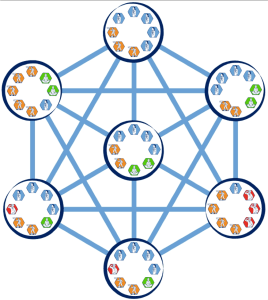Pathfinder’s Logic
An organisation is the sum of its people as culture is a collective concept, even stronger than individuals. When we apply this thinking in an organisational context it enhances organisational development.
This model can be appl ied to almost any organisational or team effectiveness issue. If something isn’t working within your organisation or team, chances are some of the elements identified by this classic model are misaligned. Once these inconsistencies are revealed, you can work to align the internal elements, in harmony with the shared values, so they all contribute to the strategic objectives.
ied to almost any organisational or team effectiveness issue. If something isn’t working within your organisation or team, chances are some of the elements identified by this classic model are misaligned. Once these inconsistencies are revealed, you can work to align the internal elements, in harmony with the shared values, so they all contribute to the strategic objectives.
The starting point is usually to engage organisation insiders (often its leaders and people-focussed generalists) who can use the model to make sense of the organisation around them. You can use the 7S model to analyse the current situation (A), establish a proposed future state (B) and identify gaps and inconsistencies between them. It’s then a question of adjusting and tuning the elements of the 7S model to ensure your organisation works effectively once you reach the desired endpoint. The path is clearly defined by the indicators from the Graves levels.
This also clarifies on which and at how many levels an organisation operates, what is possible and healthy, where conflicts originate within an organisation, how to manage interfaces, as well as how well an organisation is reflected by and serves its customer base. Targeting customer personas and groups becomes a whole new ball game.
You will benefit by…
- Creating maps to identify where individuals, teams/groups and entire organisations are
- Identifying differences that lead to disharmonies and conflicts
- Obtaining a clear / measurable understanding of the status-quo and the foresight to pro-actively manage change
- Getting a visual understanding of the dynamics around you
- Being able to recognise the right cultural fit for you, what to look out for and where your limits are.
The business implications are manifold. Very common ones are when an organisation wants to determine how best to implement a proposed strategy, examine the likely effects of future changes, or integrate and align departments and processes during M&As.
The model can be used to consider entire organisations but its elements can also be applied to a team or project. The ultimate goal is to minimise frictions and improve a company’s performance.
Here are two best practice examples. Each one illustrating a different transformation:
-
- Going from an 4th stage efficiency-driven organisation to a 5th stage truly customer-centric one
- Moving from a 5th stage performance- and customer-driven firm to a 6th stage truly agile organisation

